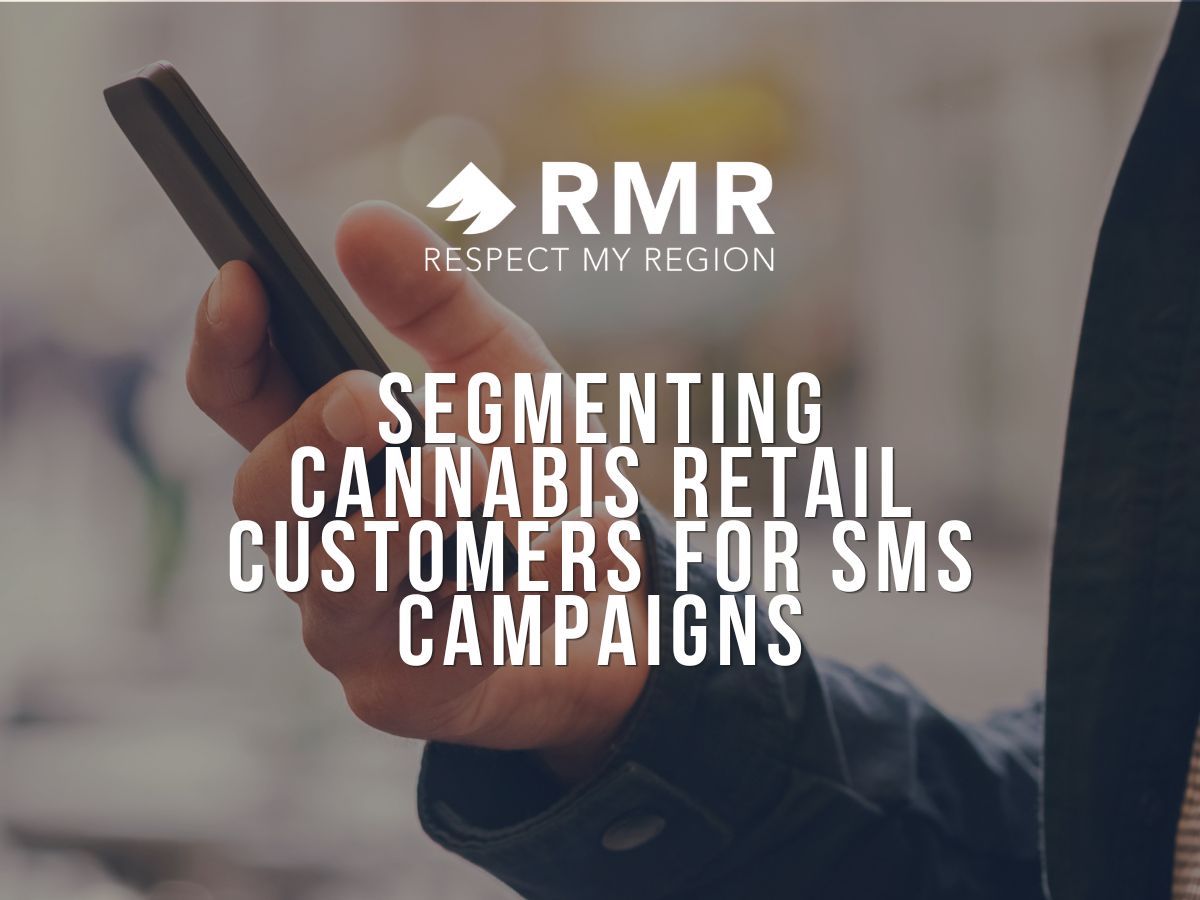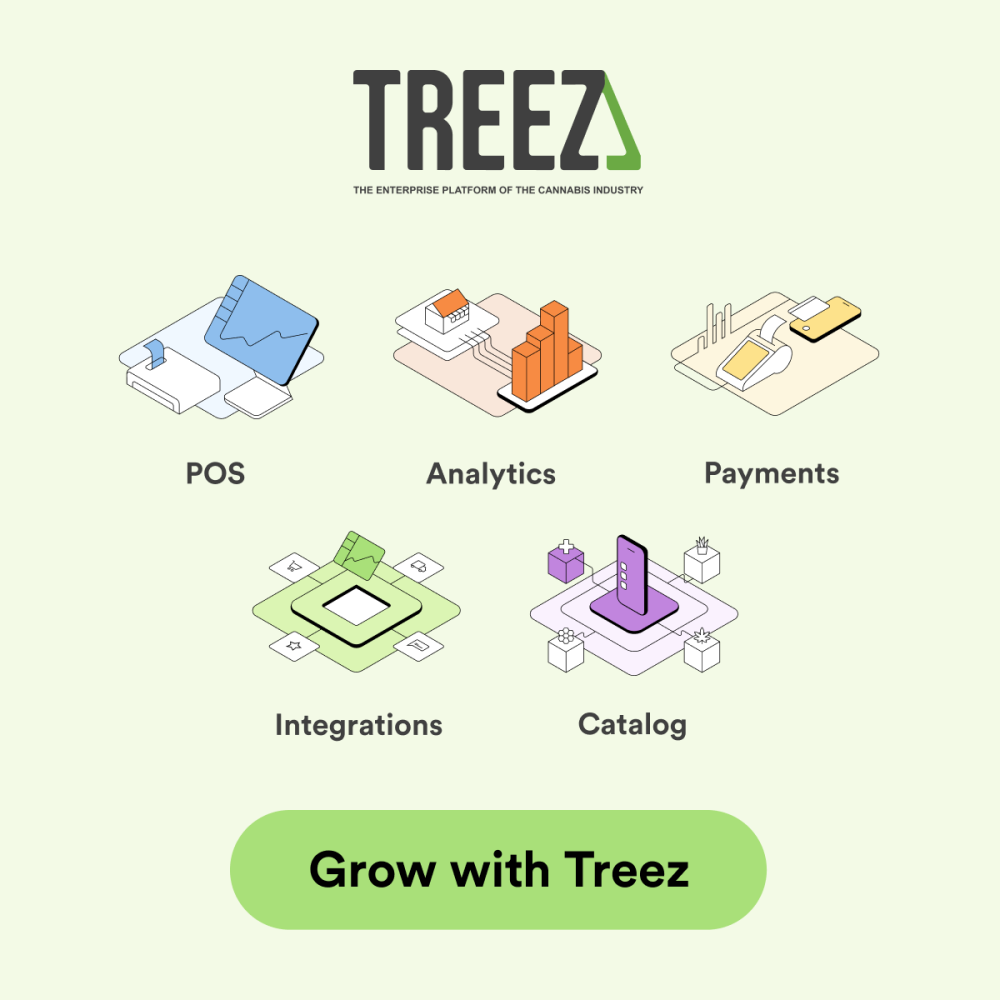We’ve been talking about this topic pretty often recently, just more on the Respect My Region Youtube channel via our Digital Trapper Institute podcast. Now it’s time for the written version ya’ll. Today we’re going to explore the importance of customer segmentation and how to improve revenue using text messaging campaigns. Make sure y’all read all the way through because we 100% provide real-life tips on how to segment customers in the cannabis retail world effectively. I’ve used these methods to grow retail revenues in California and to improve web traffic for retailers in Washington State.
The best marketers and most successful businesses are constantly seeking innovative ways to reach and engage their customers. One effective method for growing revenue at retail businesses that has gained significant popularity over the last five years is text messaging campaigns.
With billions of people owning mobile devices and using SMS as a primary means of communication, text messaging provides a direct and highly personalized channel to connect with customers. To maximize the effectiveness of these campaigns, it is crucial to segment customers based on their purchasing habits. Below, I’m going to dive into a bunch of specifics regarding how you can improve revenue using text messaging.
Understanding Customer Segmentation in Cannabis Retail
Customer segmentation is the process of dividing a customer base into distinct groups based on shared characteristics or behaviors. By segmenting customers, businesses can tailor their marketing efforts and messages to specific groups, increasing relevance and engagement. In the context of text messaging campaigns, customer segmentation enables businesses to send targeted messages that resonate with each group or segment of people, resulting in higher conversion rates and overall greater customer satisfaction.
The key thing to remember here is that nobody, I repeat, NOBODY, wants to be bothered by a text message that doesn’t even apply to them.

How to Increase Revenue Using Text Messaging
Segmenting customers for text message campaigns offers numerous benefits.
Here are a few key advantages:
Personalization: Segmentation allows businesses to create highly personalized text messages tailored to the specific needs and preferences of each customer segment. Personalized messages are more likely to capture attention, foster engagement, and drive desired actions.
A solid example of this is sending opportunities such as deals, discounts, new products, or event updates to a group of dabbers only, or just vapers, or just pre-roll smokers. Or maybe you’re inviting your big spenders to something or letting them know about a new product. It is 100% okay to send a personal message to 100-500 people when it actually applies to them and there’s a good chance they’ll care about the products or opportunity you’re making them aware of.
Relevance: By understanding customer segments, businesses can send messages that are relevant to their unique interests, demographics, or behaviors. Relevance increases the chances of customers responding positively to the messages and taking the desired actions. This is incredibly important to think about when you’re promoting something to a bunch of different people. Someone who has demonstrated they only purchase edibles probably isn’t interested in high THC flower or the latest rosin dabs. Serve them an edible deal or update and tie in something with it that makes more sense.
Efficiency: Segmenting customers allows businesses to optimize their resources by focusing on the most receptive audience for each campaign. Rather than sending generic messages to the entire customer base, businesses can send targeted messages to specific segments, resulting in higher conversion rates and cost efficiency. Now obviously in the world of cannabis, bandwidth is a major issue. That really means time is of the essence, resources are low, and things change quickly, so we have to make our marketing dollars go a bit further than usual. If your goal is to improve revenue using text messaging, we don’t want to waste money on text blasts to a ton of people with low potential of converting into business.
A solid way to go about running an efficient campaign would be to craft short unique messages for different customer groups. Speak to the $25 8th smokers. Craft a message to the disposable or all-in-one vapers. Try running something just for the people who buy ounces of flower. You’ve got to test things out but I never recommend testing a generic % off deal across an entire company list.
Customer Retention: By segmenting customers, businesses can identify loyal or high-value customers and develop specific campaigns to nurture and retain them. Building strong relationships with these segments can lead to increased customer loyalty and long-term profitability.
I was mentored by someone who has proven to be quite successful in the sales world and something they told me years ago lives with me every day.
“Joey, people require 20-27 touches before they’ll consider buying something.”
Advertisements like billboards, the radio, social media likes, comments, emails, even text messages, all play into that magical number of touches it takes to get someone to buy frm you.
Ideally, you should strategize a solid plan for text messaging that includes updates on product-specific deals, category-specific opportunities, and in those SMS messages you include various graphics, blog posts, and videos to help communicate the opportunity. If your marketing can handle responding to the reviews on Google and Weedmaps, or engaging on social media with local people via comments, reposts, and liking things, then those engagement points will definitely expedite the number of touches with real people in your local community and more quickly get those people to become loyal for life. Customer retention is arguably the most important thing to consider when trying to improve revenue using text messaging.
Segmentation Strategies For Cannabis Retail
Demographic Segmentation: Demographic segmentation involves dividing customers based on various demographic characteristics such as age, gender, location, income, and occupation. This type of segmentation provides valuable insights into the preferences and behaviors of different demographic groups.
For example, a cannabis retailer might target senior customers with low THC or lower dose offerings and focuses on more of a sophisticated or classic look for those older customers.
Behavioral Segmentation: Behavioral segmentation categorizes customers based on their actions, interactions, and purchasing behavior. This segmentation strategy considers factors such as purchase history, frequency of engagement, previous products purchased, categories, and engagement channels. For instance, a cannabis delivery platform might send personalized discount codes to customers who have abandoned their shopping carts, encouraging them to complete their purchases. Another good idea would be to reach out to people that haven’t visited in a month or even in the last 90 days, and giving them a good deal to come back in.

Psychographic Segmentation: Psychographic segmentation focuses on customers’ interests, lifestyles, values, and attitudes. This segmentation strategy allows businesses to create messages that resonate with customers’ motivations and aspirations. For example, a fitness center might target health-conscious customers who value active lifestyles and send them motivational messages to encourage regular gym visits. This style of segmentation is something I leverage and activate when I’m pairing a product to a lifestyle. It could be something luxurious, or hustling student, or the hard-working 9-5’er.
Purchase History Segmentation: Segmenting customers based on their purchase history helps businesses tailor messages according to their buying patterns and preferences. By analyzing past purchases, businesses can identify cross-selling or upselling opportunities and send relevant product recommendations or loyalty rewards. This segmentation strategy enhances customer satisfaction and drives repeat purchases.
You can also ensure that the only customers that recieve a text message promoting a restock or deal on Brand X have actually purchased Brand X previously. You can even segment deeper to super fans and find inviduals that have purchased Brand X 5+ times, usually purchases every week, AND hasn’t made a pruchase in 8+ days. That person is highly interested in that brand and due for an order. Every single person you pay to reach with this text is a high value conversion opportunity and they most likely will be stoked to recieve that text and not the least bit bothered.
Purchase history has been mentioned a few times throughout this article so far. I rely heavily on this segment of segmentation and believe that the proof is always in people’s purchase history. What have you purchased before in terms of products, strains, pricing, and even the time of the day?
Geographic Segmentation: Geographic segmentation involves dividing customers based on their geographic location. This strategy allows businesses to send location-specific offers, local event notifications, or store-related updates. For example, a restaurant chain might send exclusive deals to customers within a certain radius of their locations to drive foot traffic. This definitely applies to retailers who have surveyed their customers and acquired data surrounding their geographic location.
I tend to think about where people are coming from, or where they’re ordering delivery to, and then diving into patterns that I see in their baskets. What are they buying and at what time of the day? If I can feed valuable opportunities to those people, there is a good chance they’ll try something new that is similar to what they already have proven to get.
Implementing Customer Segmentation for Text Messaging Campaigns
Data Collection and Analysis: To effectively segment customers, businesses must collect and analyze relevant customer data. This data can be obtained through customer surveys, transaction histories, website analytics, and social media insights. Once the data is collected, businesses can use various analytical tools to identify patterns and segments within the customer base.
This part is super important and I hope you guys take it seriously.
Meet with Weedmaps. Meet with Leafly. Set up consistent meetings with your text message provider and/or your point of sale technology team. You want to work with their client success teams directly so that you can ask for data on these platforms pertaining to what people are buying in specific areas, the best performing deals, top-selling strains, and more. I can go on and on here but ultimately they have the answers as to what sells the fastest and who is all buying.
Defining Customer Segments: Based on the analysis, businesses can define distinct customer segments by grouping customers with similar characteristics or behaviors. It is essential to ensure that the segments are meaningful and actionable, allowing for targeted messaging. A rough example to start off with could be you defining a flower customer segment, or perhaps a vape segment. Look for patterns in those customers that relate to popular brands, top-selling skus, geographic location of customer, THC %, etc.

Crafting Targeted Messages: Once customer segments are defined, businesses can create personalized and compelling messages for each segment. Tailor the content, tone, and call-to-action according to the preferences and interests of each segment. A/B testing can help refine the messaging and optimize response rates. These last few parts here can sometimes be tough but you shouldn’t worry too much.
If you legitimately rely on proven data-driven copy templates from the various tech platforms that handle text messaging, you’ll be fine. Use these to start off then adapt and optimize as you see fit. I’m also perfectly okay with you reaching out to me via email with any questions.
Automating Campaign Execution: Leverage marketing automation platforms or customer relationship management (CRM) systems to streamline the execution of text messaging campaigns. These tools enable businesses to schedule and send messages to specific segments, track engagement metrics, and measure campaign effectiveness.
Once you create your various strategies, automating your campaigns can save you time. Build them out on a platform and schedule them out ahead of time. If you need recommendations for a platform to use, or which one might be best for you, again, feel free to reach out with any questions.
The key to remember here is that segmenting customers will increase the likelihood that you’ll improve revenue using text messaging that you’re proud of. This is a powerful strategy to enhance customer engagement, drive conversions, and build long-term relationships.
By understanding the importance of customer segmentation and implementing effective segmentation strategies, businesses can deliver highly targeted and personalized messages that resonate with their audience. As technology continues to evolve, businesses must adapt and refine their segmentation approaches to stay ahead of the competition and deliver exceptional customer experiences.








